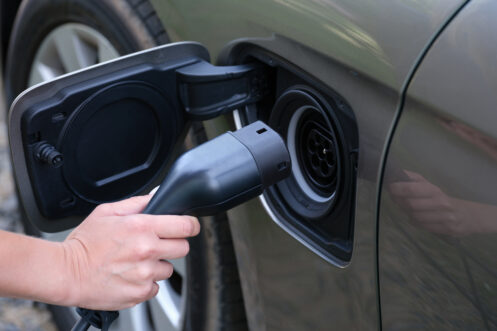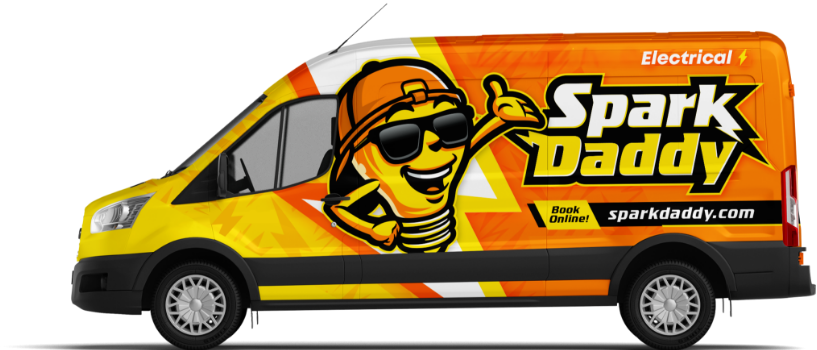Are you thinking about making the switch to an electric vehicle (EV) or already own one? You’re not alone, as drivers are embracing EVs every day for their efficiency, cost savings, and environmental benefits. Consumers often wonder what the best way to charge at home in St. Louis, MO, is. Whether you’re curious about the setup process, wondering if your home’s electrical system can handle an EV charging station, or are just looking for tips on choosing the right charging station, you’re in the right place. Let’s break down everything you need to know about home charging for EVs, so you can drive confidently and keep your car powered with ease.
EV Chargers: Levels and Options
Before you start installing anything, you need to understand the different kinds of EV chargers that are available. EV charging can be broken down into three levels, each with its own speed and power limits. Level 1 chargers are the simplest and commonly come with most electric cars. They plug into a standard 120-volt outlet and charge slowly. This is ideal for overnight charging if you drive short distances. However, if you commute longer distances or need faster charging, a Level 2 charger might be a better option.
Level 2 chargers require a 240-volt outlet and can charge your car significantly faster than Level 1. These chargers are multifunctional, providing the benefit of a faster charge while being acceptable for domestic usage. Level 3, often known as DC fast charging, is the quickest charging option available. However, because of their high cost and power needs, they are primarily used in commercial settings. For most homeowners, Level 2 strikes the perfect balance between speed and affordability.
Setting Up Your Home
Before you set up a home charging station, you should check how much electricity your house can provide. Older homes, especially, may not be able to handle the higher demand for an EV charger. A licensed electrician will look at your electrical panel to make sure it has a 240-volt plug big enough for a Level 2 charger. Upgrades, such as expanding the panel’s capacity, should be addressed prior to installation.
Consider where the charger will be placed in addition to the panel. Most homeowners pick the garage because it offers cover and keeps their equipment safe. If you don’t have a garage, you may install it outside.
Charger Choice
With so many versions on the market, selecting the right charger might be intimidating. Begin by examining your vehicle’s charging capability. Some EVs cannot fully use high-power chargers. Matching your vehicle’s capacities is critical. Also, search for chargers with user-friendly features such as a smartphone connection, which lets you check charging progress and plan sessions during off-peak hours to save money on power.
It’s also worth looking for chargers with built-in safety features like auto cutoff and surge protection. These guarantee that charging stops when your battery is full and protect against electrical issues. These features might initially cost more, but they’ll save you money in the long run.
Installation Process: What to Expect
Once you’ve selected the right EV charger, the next step is installation. This requires the expertise of a licensed electrician. Professional installation ensures that your charger is set up safely and meets all necessary electrical codes. An electrician will begin by assessing your home’s electrical system to confirm it can support the charger. If your system requires an upgrade, such as increasing the panel’s capacity or adding a dedicated circuit, this will be addressed before the charger is installed.
The actual installation consists of wiring the charging station, adding a 240-volt outlet (for Level 2 chargers), and securely attaching the equipment. Depending on your home’s configuration, the procedure might take anywhere from a few hours to a full day. Homes with current electrical panels may need less time. However, older systems may necessitate more effort to satisfy the charger’s power requirements.
After installation, the electrician will test the station thoroughly to ensure it operates correctly and efficiently. They’ll also walk you through the essentials of maintaining your charger. For instance, keeping the plug and cable clean and avoiding harsh bending helps extend their lifespan. Proper care and routine checks ensure your charging station remains reliable for years, offering you hassle-free, at-home EV charging.
Charging Smart: Make the Most of Your Station
A home charging station is more than convenient. It also allows you to optimize how and when you charge your EV. Many electric providers provide time-of-use pricing, which means power is cheaper during off-peak hours, such as late at night. By arranging your charging sessions during these hours, you may considerably reduce your energy expenditure.
You can set up charging plans, keep an eye on how much energy is being used, and be notified if there are any issues. You can control how much power gadgets use with chargers that work with home energy management systems.
Costs
Installing a home EV charger comes with upfront costs, but there are ways to offset these expenses. Many utility companies offer rebates for installing Level 2 chargers, and federal or state tax credits may also be available. These incentives can significantly reduce the cost of equipment and installation, making it more affordable for homeowners.
Additionally, charging at home is typically cheaper than using public charging stations. Over time, these cost savings add up, especially if you charge during off-peak hours. When you factor in the convenience of having a charger at home, it’s an investment that pays for itself in convenience and reduced expenses.
Future of EV Charging at Home
Home charging technology is improving quickly as the number of people who own electric cars continues to rise. Using wireless charging pads, for example, you can charge your car without any cords at all by just putting it on top of the pad. Another interesting new technology is solar-powered chargers, which let people use clean energy to power their cars.
Home Maintenance Tips for Your EV Charging Station
Once your home charging station is installed, keeping it in top condition ensures safety, efficiency, and a longer lifespan. While EV chargers are designed to be low-maintenance, a little care goes a long way. Start by regularly inspecting the charging cable for wear or damage. Frayed or cracked cables can pose safety risks, so replace them immediately if issues arise.
Keep the charging station clean and free from dust or debris, especially if it’s installed outdoors. To clean the machine, use a soft cloth instead of strong chemicals that could damage the surface. For outdoor setups, make sure the waterproof case is tight and free of cracks to keep internal components safe.
Also, monitor the station’s performance. If you see charging issues or warning messages, check the user manual or call the maker for help fixing the problem. Periodic checks by a licensed electrician can catch any potential problems early, ensuring your charging station runs smoothly for years to come.
Contact Us Today
Switching to an electric vehicle is an exciting step toward a cleaner, more efficient future, and having a reliable home charging station makes it even better. Planning your home charging system ahead of time can save you time, money, and trouble in the long run. You should learn about the basics of EV chargers and choose the best setup for your needs. At Spark Daddy, we’re here to help every step of the way. If you’re ready to upgrade your home with a charging station or have questions about the process, don’t hesitate to reach out. We also offer generator, circuit breaker, surge protection, lighting, voice, whole home rewiring, and electrical panel services.
Contact Spark Daddy today to schedule an appointment for electrical services.




